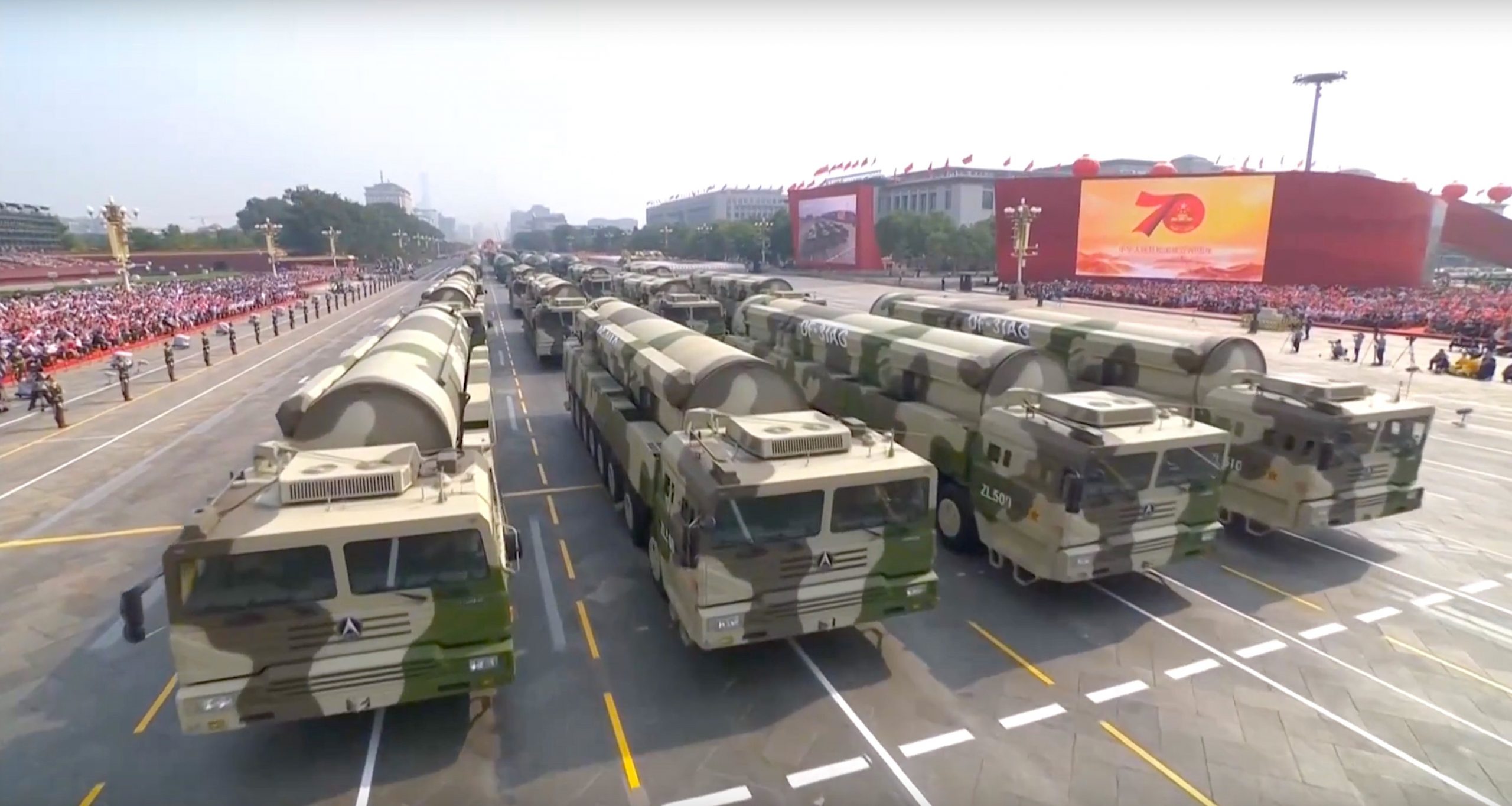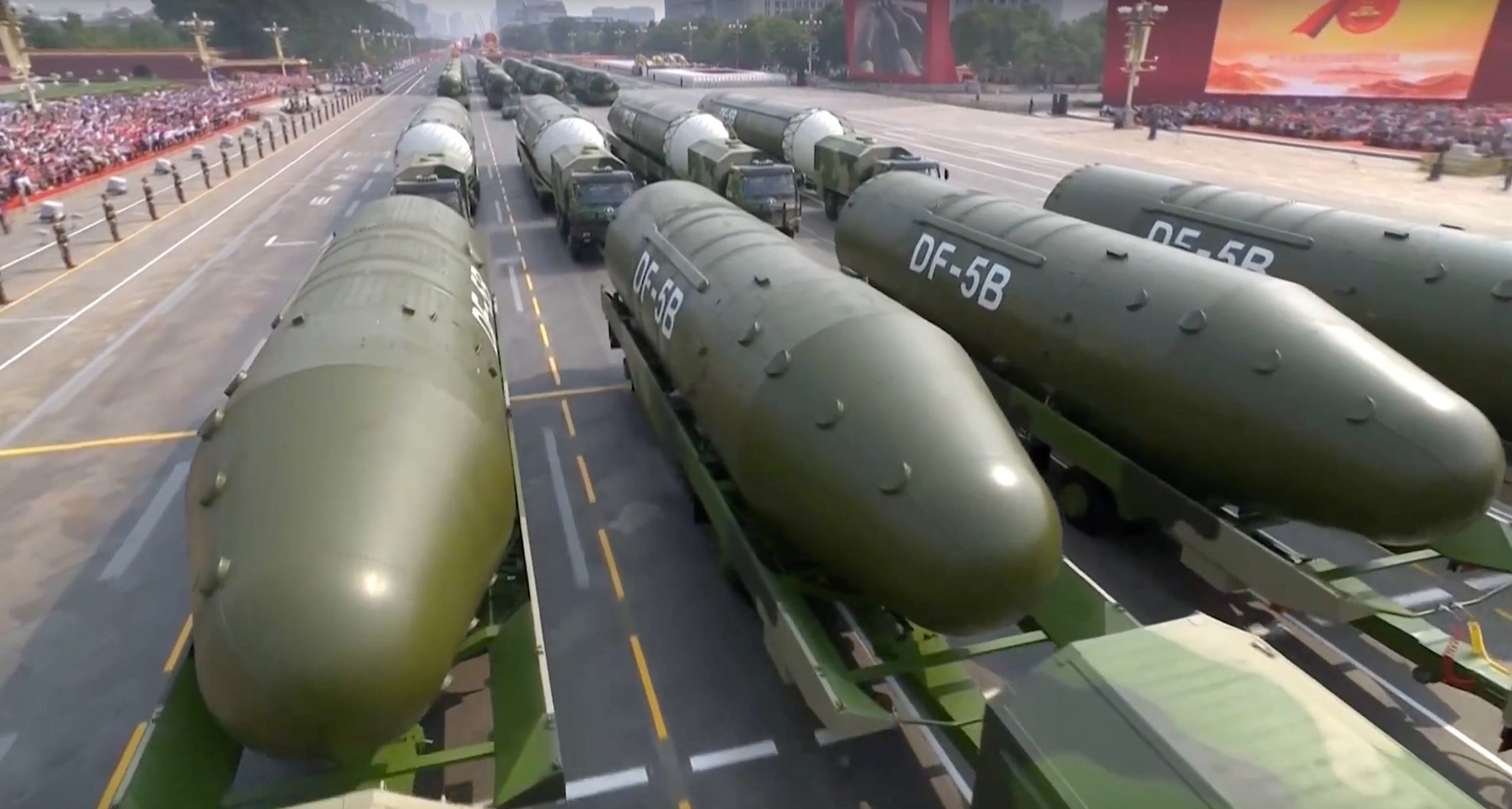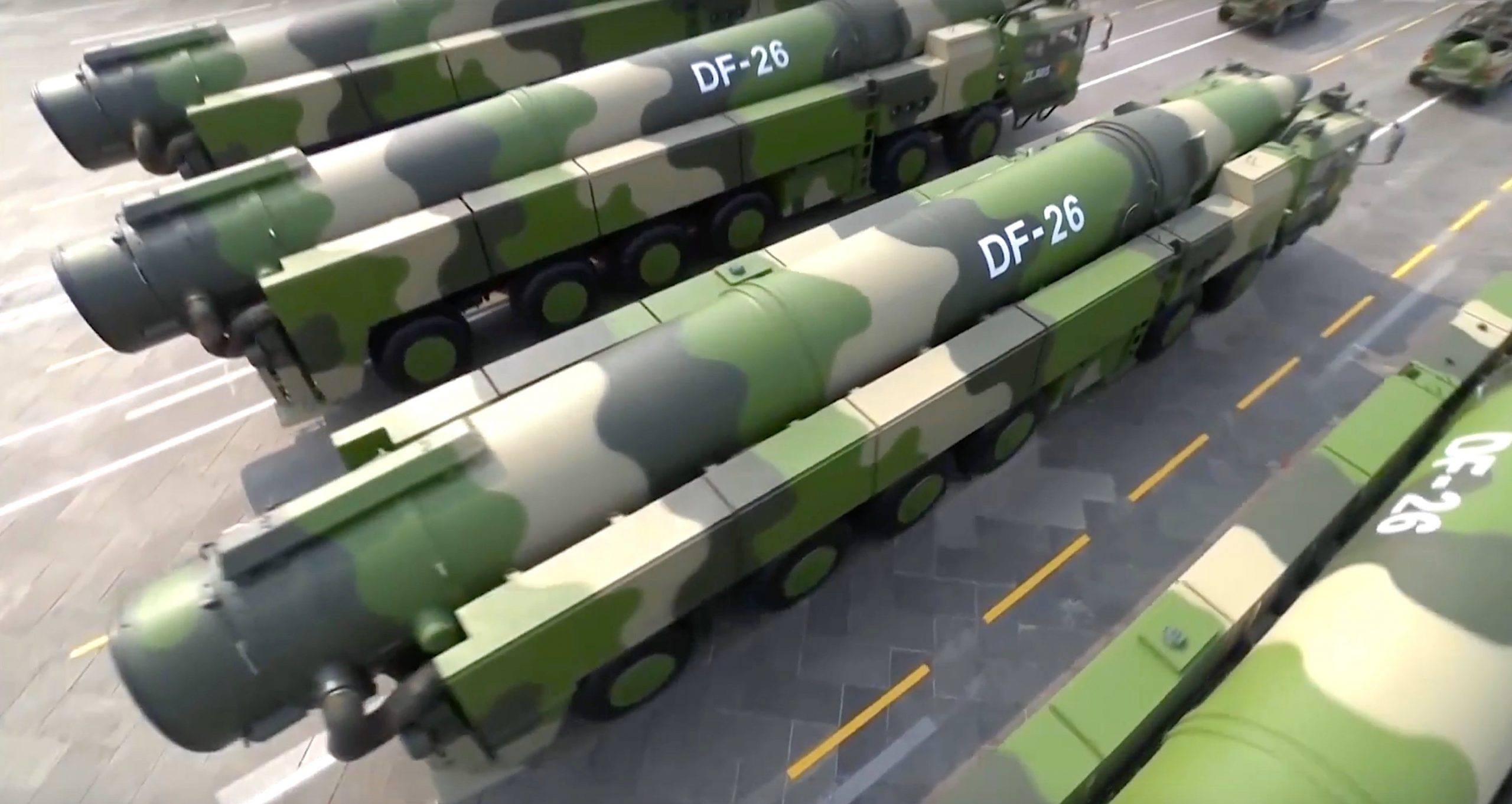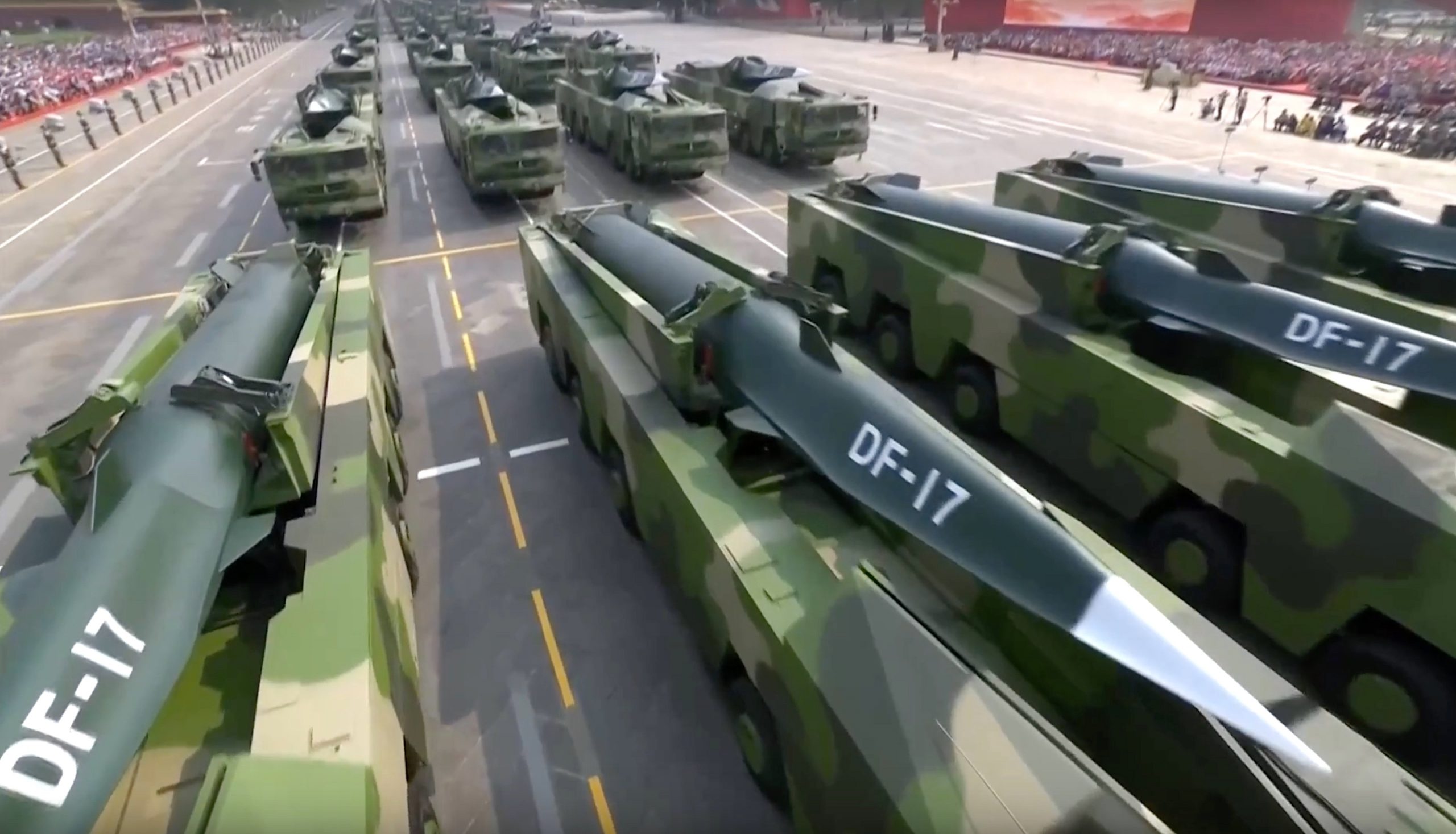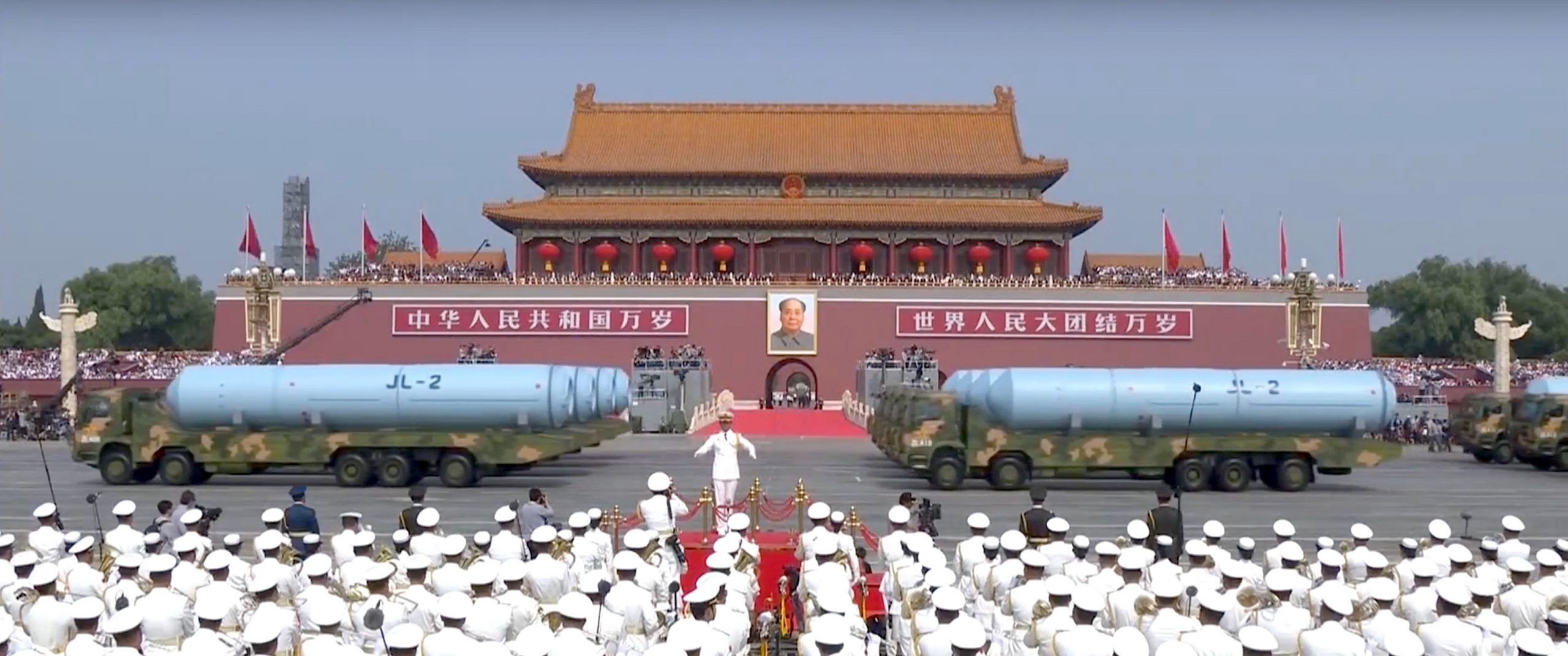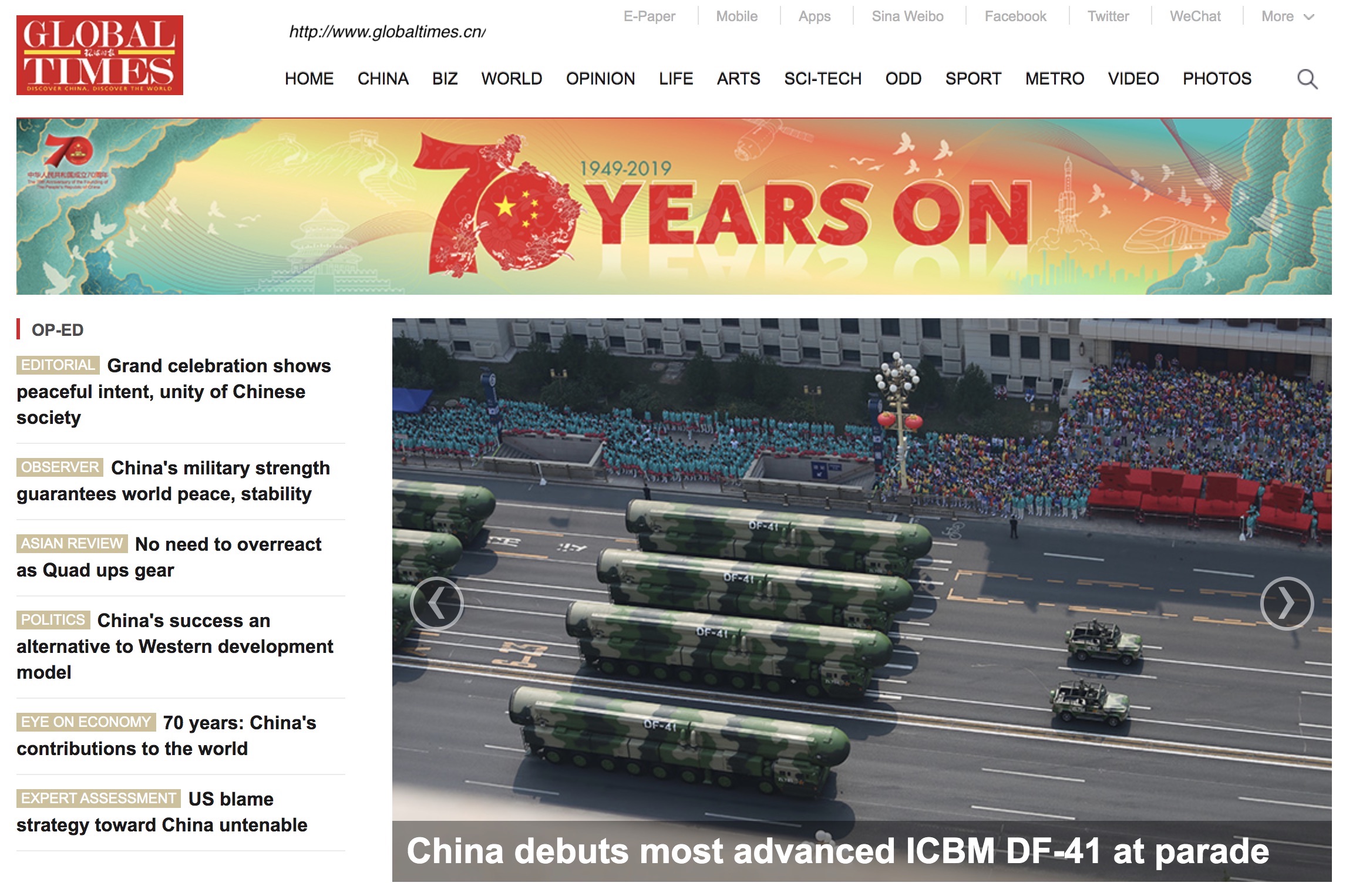
Military Might Takes Center Stage at Chinese 70-Year Anniversary Parade
The Chinese leadership used the 70-year anniversary of the founding of the People’s Republic of China to display a dizzying amount of military hardware during a parade in Beijing (see officially narrated video here; higher-quality video is here. Beijing is rapidly becoming the new Red Square when it comes to military displays. On the nuclear side, the display included three ICBMs, an IRBM, a SLBM, and bombers.
The parade for the first time included the long-awaited DF-41 road-mobile ICBM. A total of 16 TELs were displayed (18 have been seen), launchers that Xinhua said came from two brigades. The display of the DF-41 happens more than two decades after it was first reported in development by the Pentagon in 1997. The DF-41, which is China’s first road-mobile ICBM capable of carrying MIRV, was described by the official parade commentator as to “balancing the power and security victory.”
The DF-41 was seen operating at the Jilantai training area in April 2019 and is currently being integrated into the PLARF. With an estimated range similar to the 13,000 kilometers of the silo-based DF-5, the DF-41 will initially complement but eventually probably replace the older liquid-fuel missile. China is currently building what appears to be silos in the Jilantai area that may eventually be intended for the DF-41.
The DF-31AG ICBM also reappeared. Xinhua described it as a “second-generation” nuclear missile with “high mobility and precision.” The 16 TELs displayed were said to be from two brigades. The official parade speaker described it as a “modified DF-31A” rather than a new missile. US intelligence has consistently described the DF-31A as a single-warhead ICBM, which also seems to be the case for the DF-31AG. DF-31AGs were also seen operating in Jilantai in April. The new DF-31AG TEL will likely replace the less maneuverable DF-31A (and DF-31) TELs.
The DF-5B silo-based ICBM was also displayed, a repeat of the 2015 parade. Xinhua said the four-missile formation came from a single missile brigade established in the early 1960s that over the years has launched “dozens” of missiles. The official parade commentator reaffirmed the DF-5B is capable of carrying multiple warheads. The DF-5B was also seen operating in Jilantai in April. There are about 20 DF-5A/B ICBMs deployed. The much-rumored DF-5C did not appear.
The DF-26 dual-capable IRBM reappeared with 16 TELs described by Xinhua to come from “two missile troops.” First displayed in 2016, there are already 65-80 DF-26s deployed. The missile was seen operating in Jilantai in April.
The biggest surprise at the parade was probably the new DF-17 ballistic missile-launched hypersonic glide-vehicle, which made its first public appearance with 16 launchers. The DF-17 appears to use a modified DF-16 TEL and is possibly boosted by a DF-16 first stage. The US intelligence community has suggested the DF-17 might be dual-capable but the parade speaker described it as “conventional.”
The parade also included a unique display of JL-2 SLBMs, the first time the weapon has been publicly displayed. A total of 12 JL-2s were shown, corresponding to a full load of one of China’s six Jin-class (Type 094) SSBNs. Each JL-2 can carry one warhead. China is developing a JL-3 for its next-generation Type 096).
The parade also saw the overflight of the H-6K and H-6N bombers, although they had to fly through a thick haze of air pollution that has plagued the Beijing area for years. Xinhua called them “long-range strategic bombers” and said they are “under the command of a division of the aviation forces of the People’s Liberation Army’s air force that has carried out many major missions, including air-dropping atomic and hydrogen bombs.” The official mentioning of a nuclear mission is interesting because of reports that Chinese bombers have recently been reassigned a nuclear strike mission. The H-6N is thought to be intended to carry an air-launched ballistic missile (ALBM), a modification of the DF-21 MRBM.
The effect of US missile defenses on Chinese military planning was palpable at this year’s parade. This included the two MIRV-capable DF-5B and DF-41 ICBMs as well as the DF-17 hypersonic glide vehicle. Although there are many rumors that the DF-41 will carry 10 MIRV, that is probably exaggerated. The objective of Chinese nuclear strategy is to ensure a secure retaliatory deterrent and penetrate US missile defenses, not to maximize the number of warheads, so the number of MIRV will likely be lower, perhaps three per missile.
The challenge of using an overstocked military parade to demonstrate China’s peaceful intensions was evident in several commentators. The official parade commentator reminded that China’s missiles are “deployed in the mountains and the oceans in defense of national security and world peace.” And the Global Times front-page coverage was balanced by a selection of editorials, reviews, and comments that reminded of China’s “peaceful intent,” “world peace” and “stability,” and that there’s “no need to overreact.”
Additional background about Chinese nuclear forces:
- FAS Nuclear Notebook: Chinese Nuclear Forces, 2019
- FAS Blogs about Chinese nuclear forces
- Podcast with CSIS’ ChinaPower
- Podcast with Ploughshares Fund
- FAS Overview: Status of World Nuclear Forces
This publication was made possible by generous contributions from the Carnegie Corporation of New York, the John D. and Catherine T. MacArthur Foundation, the New Land Foundation, the Ploughshares Fund, and the Prospect Hill Foundation. The statements made and views expressed are solely the responsibility of the authors.
The FY2026 National Defense Authorization Act (NDAA) paints a picture of a Congress that is working to both protect and accelerate nuclear modernization programs while simultaneously lacking trust in the Pentagon and the Department of Energy to execute them.
While advanced Chinese language proficiency and cultural familiarity remain irreplaceable skills, they are neither necessary nor sufficient for successful open-source analysis on China’s nuclear forces.
Satellite imagery has long served as a tool for observing on-the-ground activity worldwide, and offers especially valuable insights into the operation, development, and physical features related to nuclear technology.
This report outlines a framework relying on “Cooperative Technical Means” for effective arms control verification based on remote sensing, avoiding on-site inspections but maintaining a level of transparency that allows for immediate detection of changes in nuclear posture or a significant build-up above agreed limits.

